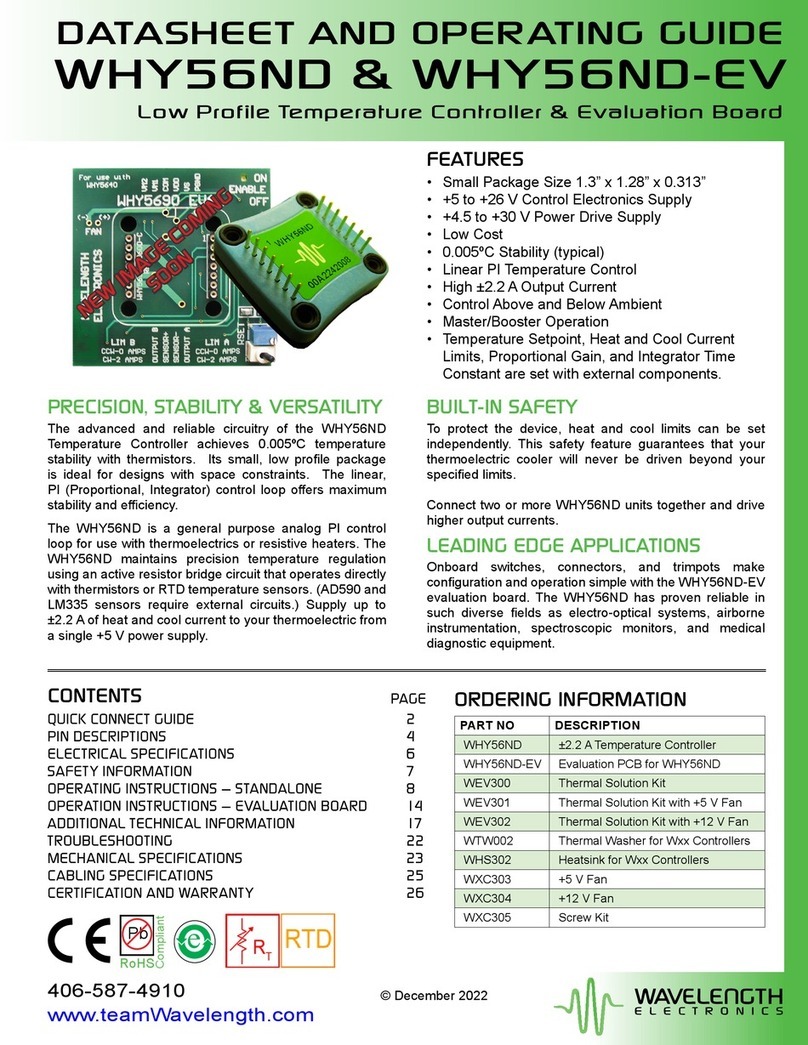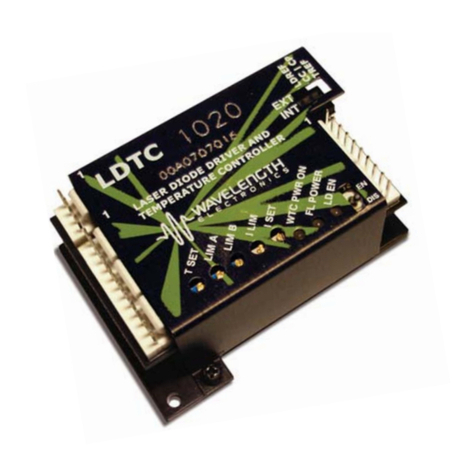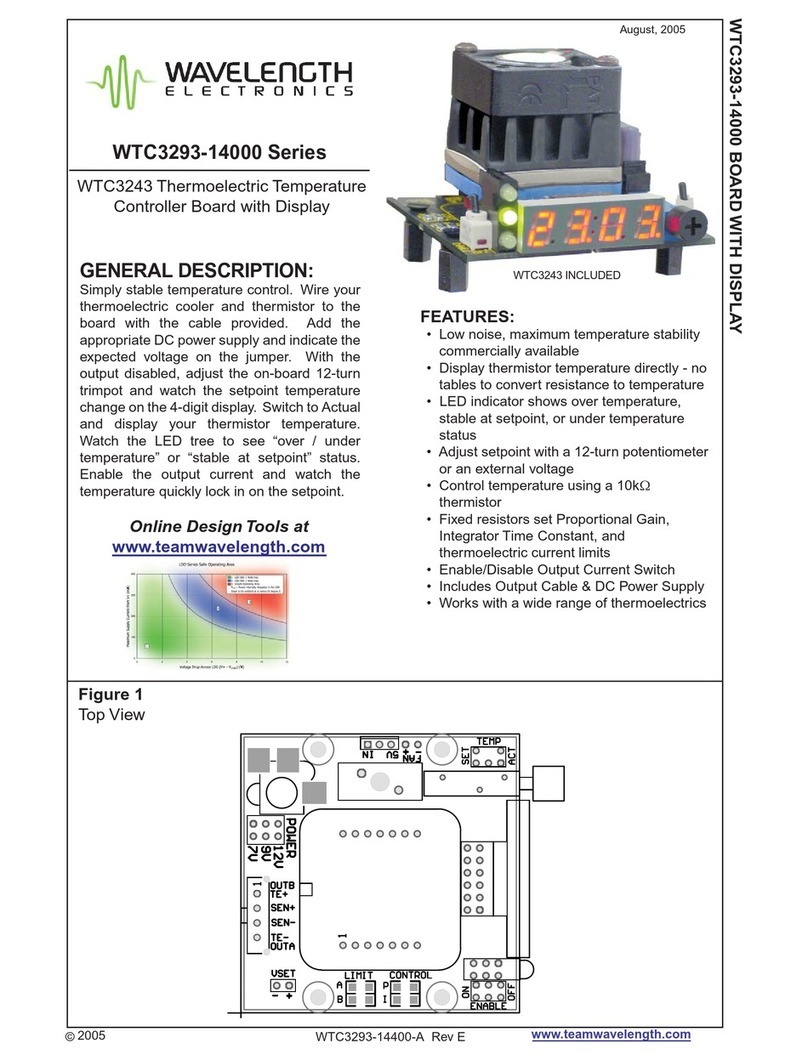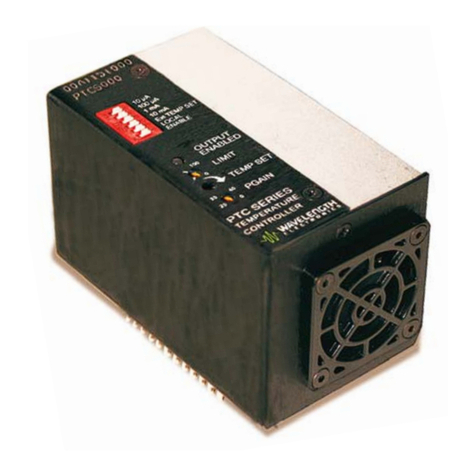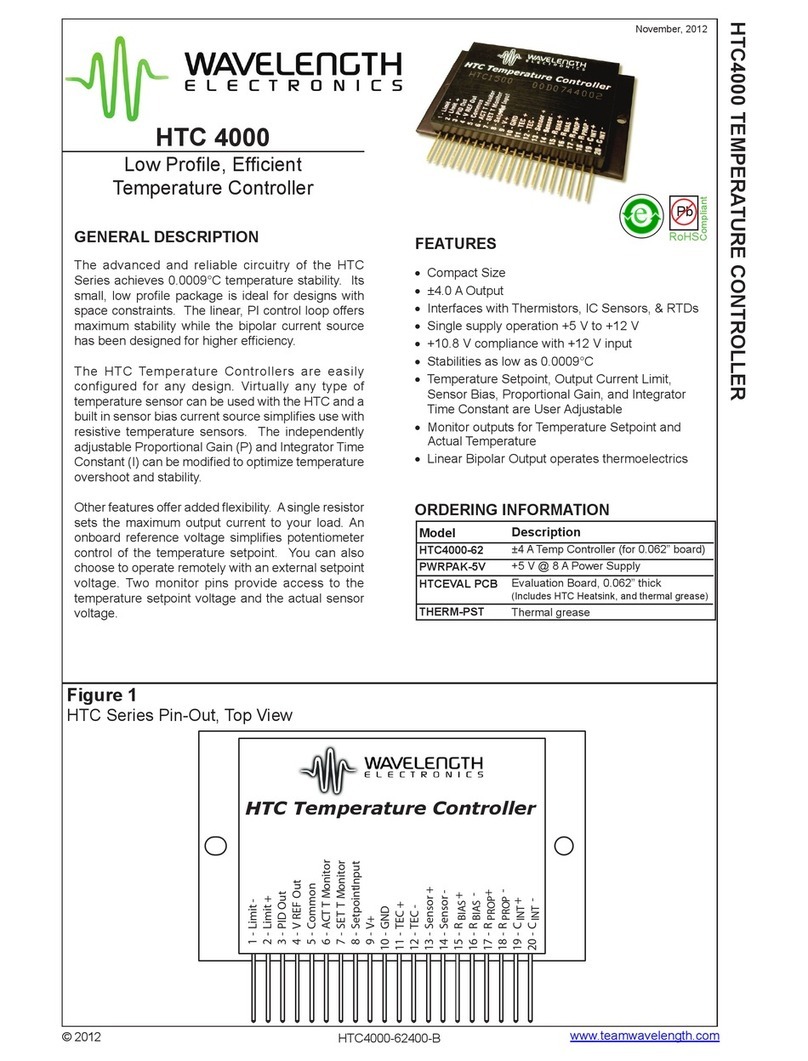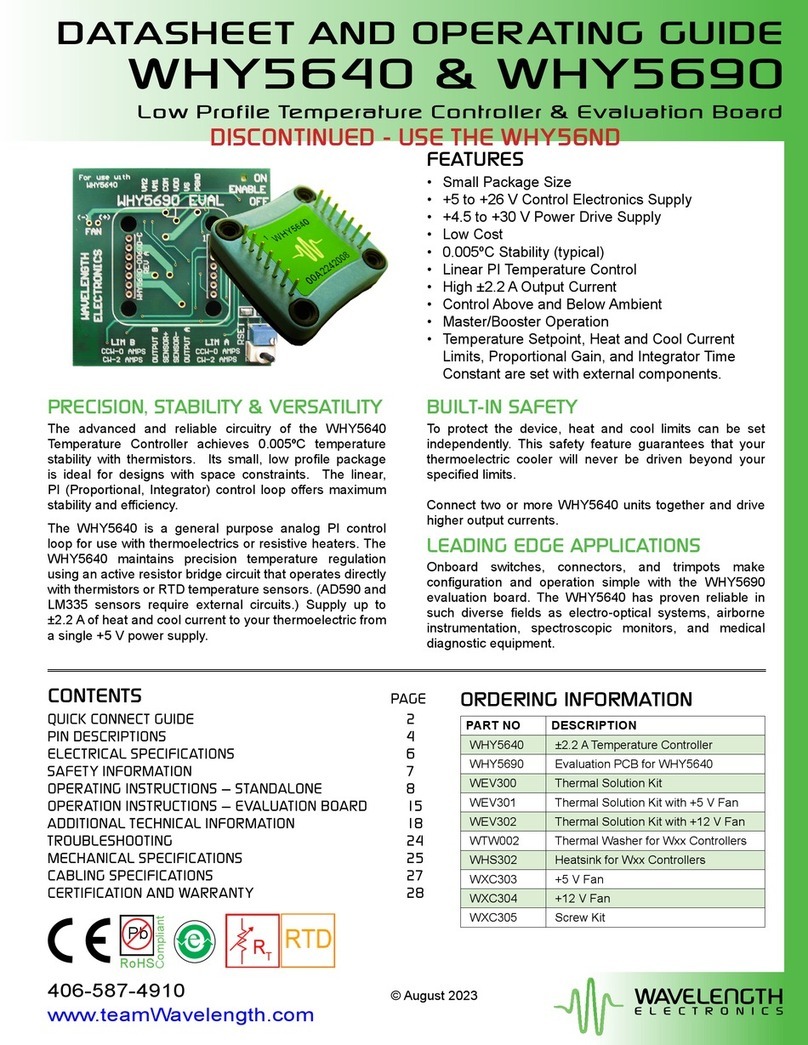
© 2018 www.teamWavelength.com 8
LDTC0520 / LDTC1020 LASER DIODE AND TEMPERATURE CONTROLLER
THEORY OF OPERATION
The LDTC Laser Diode Driver and Temperature Controller
combines Wavelength’s proprietary FL500 and highly stable
WTC3243 in one compact module.
The LDTC0520 employs a single FL500 laser diode control
chip; the LDTC1020 parallels two FL500 chips. The current
It may be useful to remember that you do not directly set the
that represents the output current. The setpoint voltage is
controlled by the onboard trimpot or by an external input.
across the load because of the impedance. As the current
Once that occurs the current source is no longer able to
increase the current driven to the load even if you increase
the setpoint.
The LDTC laser driver includes features that help protect
your laser and make the driver more versatile in a wide array
• The current limit is set by an onboard trimpot and protects
the laser from over-current conditions. The current
events without phase shifts or inversions.
•
ramps the current to setpoint at a rate of 15 mA / msec.
• The photodiode feedback control loop allows for
Constant Power operation whereby the driver adjusts
the laser forward current in order to maintain a constant
photodiode current.
•
DD_FL
heater. The controller adjusts the output current in order to
change the temperature of the sensor that is connected to
the thermal load. The goal is to make the voltage across the
in spite of changes to ambient conditions and variations in
thermal load.
SAFETY INFORMATION &
THERMAL DESIGN
CONSIDERATIONS
SAFE OPERATING AREA — DO NOT EXCEED
INTERNAL POWER DISSIPATION LIMITS
and temperature controller will operate within the
Safe Operating Area
the warranty.
Go to the Wavelength Electronics website for the most
Laser Diode Drivers:
www.teamwavelength.com/support/design-tools/soa-ld-calculator/
Temperature Controllers:
www.teamwavelength.com/support/design-tools/soa-tc-calculator/
SOA charts are included in this datasheet for quick reference
page 22
instead.
Application Note AN-LDTC01: The Principle of the Safe
Operating AreaHow to Use the Safe Operating
Area (SOA) Calculator.
connections between the components are solid. We
recommend using thermal paste or thermal washers at the
load/TEC and TEC/heatsink interfaces. The thermistor must
reliable temperature control.
PREVENT DAMAGE FROM
ELECTROSTATIC DISCHARGE
and your laser. ESD damage can result from improper
with simple precautions.
Note AN-LDTC06: Electrostatic Discharge Basics.
We recommend that you always observe ESD precautions
when handling the LDTC controller and loads.
!
